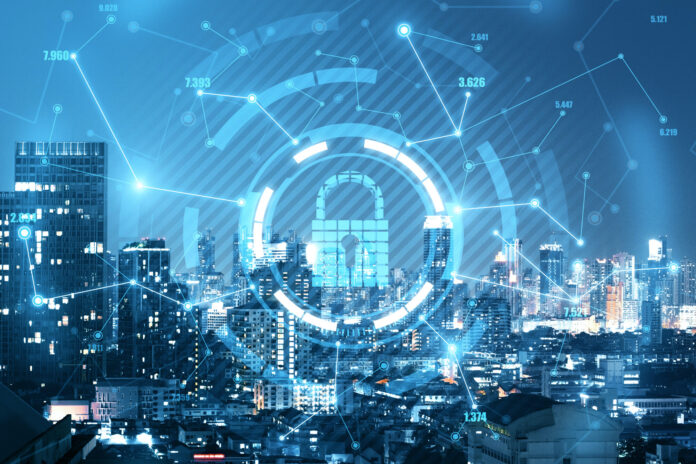
Within the next year, around 11% of MSPs plan to invest in endpoint detection and response. Endpoint detection and response (EDR) is a must-have security capability in the digital age.
This is because users are no longer constrained to traditional work hours and physical locations. They can now access company resources from anywhere at any time.
This article explores the many benefits of EDR that can help improve your organization’s endpoint security. If you’re reading this, you likely already know how vital endpoint security is and why it’s so challenging to get right.
Read on to learn more about endpoint detection and response and its role in an organization’s security strategy.
What Is Endpoint Detection and Response?
Endpoint detection and response (EDR) is a type of security software that monitors:
- Computers
- Servers
- Other network-connected devices for signs of malicious activity
If a security incident is detected, EDR solutions can automatically take actions such as :
- Blocking the attack
- Quarantining the device
- Sending alerts to security operations teams
EDR differs from endpoint protection platforms (EPPs) which provide extra layers of protection against malware and other threats. EDR is a detective security technology, while EPP is more of a preventative solution.
EDR software is installed on endpoints to collect data about the health and state of those endpoints.
The software collects data about things like :
- Network connection
- Activity user logins
- Applications running on endpoints
- Changes to computer settings
This data is then analyzed for signs of malicious activity. Now that you’ve got a better understanding of what endpoint detection and response are let’s dive into the benefits of EDR.
Detect Attacks With Real-Time Visibility
EDR solutions can detect and respond to security incidents in real-time. New threats and attacks are constantly emerging. Organizations need to stay ahead of these threats.
They can do this by monitoring endpoints and blocking suspicious activity. EDR solutions can provide real-time visibility into what’s happening on your :
- Endpoints
- Network traffic
- Application data
By detecting suspicious activity, security analysts can take action immediately to stop attacks. They can also prevent them from spreading throughout the network and infecting endpoints.
In an EDR solution, security analysts can set up detection rules to trigger an alert. This happens whenever a specific type of cyber attack or malicious activity is detected.
This real-time visibility can help security teams respond to security incidents faster and more effectively.
Proactively Hunt for Threats
EDR solutions can go beyond detecting threats. They provide visibility into your network to help with :
- Network mapping
- Network segmentation
- Asset discovery
Organizations can identify critical:
- Assets
- Manage risk
- Improve security with network mapping and segmentation
When it comes to critical assets, organizations need to know what devices are connected to their networks. And they need to know what services they provide.
EDR solutions can help security teams map and identify critical assets, such as servers, databases, and other services.
Respond to Security Incidents Instantly
EDR can help security teams respond to security incidents with real-time alerts and the ability to take automated actions. This means fewer security incidents will go unresolved and fewer threats will get the chance to spread across your network.
With real-time alerts, EDR solutions can immediately notify security teams when suspicious activity is detected.
But beyond alerting, EDR solutions can automatically respond to :
- Security incidents
- Block malicious activity
- Quarantine affected endpoints
Again, real-time alerts and automated responses are critical when it comes to stopping attacks and preventing them from spreading.
In larger organizations, with thousands of endpoints, security teams don’t have the time to respond manually to every incident.
Help Identify the Root Cause of Vulnerabilities
With endpoint visibility, security teams can identify potential root causes of vulnerabilities that could lead to future attacks. They can see if a specific host is infected with malware or if a user is downloading malicious files.
With access to this data, security teams can identify the root cause of vulnerabilities. And move to address them before they lead to breaches or other security incidents.
EDR solutions collect data about what applications and users are doing on endpoints and send that information to the EDR server. Security teams can then examine this data to see what applications users are interacting with. And what hosts are communicating with other hosts.
This data can help security teams identify the root cause of vulnerabilities.
Provide Visibility Into What’s Happening on Your Network
Another great benefit of EDR solutions is that they provide visibility into the activities taking place on your endpoints. This includes information about applications, users, and devices.
With visibility into these activities, security teams can better understand who is accessing company resources and how. For example, EDR solutions can monitor Windows event logs and other system logs to track application activity, like failed login attempts and other suspicious activity.
EDR solutions can also monitor application usage and user activity to see which applications are used, where they are used, and by whom.
Enable Better User and Device Risk Management
With the data collected by EDR solutions, security teams can better understand the risk posed by individuals:
- Hosts
- Applications
- Users
This allows them to prioritize their efforts to focus on the most critical issues first. You can also use this risk data to perform device risk management.
With device risk management, security teams can track a device’s risk over time and see if a device’s risk increases or decreases.
They can also identify the root cause of a device’s elevated risk. This allows organizations to accurately determine risk. And helps you make informed decisions about which devices are allowed to remain on their networks.
Enable Organizations to Adhere to Compliance Requirements
Beyond improving security and reducing risk, EDR solutions can help organizations adhere to compliance requirements. Compliance requirements vary, but regulatory agencies and industry standards set them.
You can use EDR solutions to track and document user activities, like who accessed what data and when. This can help with regulatory compliance.
Because organizations can provide proof that they have systems to track user activities and monitor suspicious behavior. If you want to learn more about protecting your business check out edr vs antivirus.
Endpoint Detection and Response: A Brief Guide
EDR solutions give organizations visibility into their endpoints. They can detect threats in real-time and respond to incidents instantly. EDR solutions can also help organizations identify the root cause of vulnerabilities and more.
Want to know more about EDR and your business? Scroll through some of the other posts in this section.









